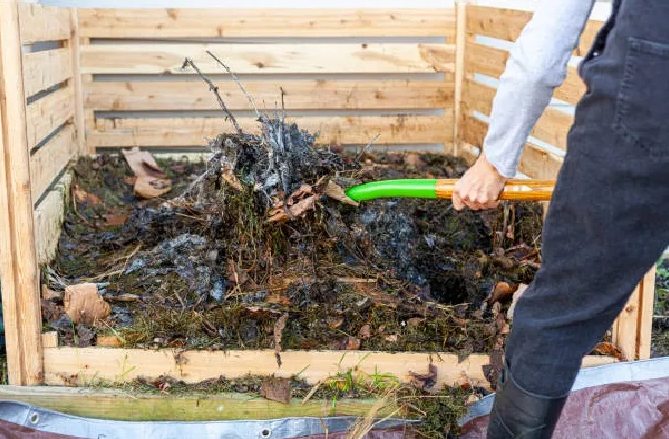Setting up a Compost Pile in the backyard of your home can prove to be a good decision for you. It not only prepares nutrient-rich Compost to improve the soil of your garden, but is also an excellent and environmentally friendly way to recycle organic waste.
Making compost is a natural process that decomposes organic materials into valuable components in the soil. In this article, we will provide you with complete information about How to start a compost pile in your backyard.
What is the Compost Pile?
A Compost Pile is like a designated area where you put kitchen scraps and yard waste. They break down and turn into nutrient-rich compost, great for improving soil in gardens. It’s an eco-friendly way to recycle and make soil better for plants.
The best time to start a compost pile in backyard
The rainy season can be a good time to start a compost pile. Water is used less during the rainy season, and can help loosen your compost pile naturally. Making a compost pile during summer can be a problem because excessive heat can dry out your pile. In cool weather, compost pile management becomes easier, and the decomposition process happens faster.
Steps for making compost in the compost pile
1. Choose a Suitable Location
First, you need to choose a suitable location for your Compost Pile. It should be a place where there is good drainage and receives sufficient sunlight. Compost bins or designated Compost areas work well, and you may consider proximity to your garden for easy access to the prepared Compost.
2. Obtain a Compost Bin or Designate an Area
To gather organic waste, you can either use a compost bin or directly create a Compost Pile on the ground. Using a compost bin is a good decision as it proves to be beneficial for storing Compost, aiding in the decomposition process, and speeding up the recycling process. Bins are also clean and can be managed more easily.
3. Collect Brown and Green Materials
Successful Compost relies on the balance between brown and green materials. Brown materials are rich in carbon and include dry leaves, straw, shredded newspaper, and cardboard. Green materials are nitrogen-rich and include kitchen scraps (fruit and vegetable peels, coffee grounds), fresh yard waste, and green plant trimmings.
4. Layering with Brown Materials
Start your Compost Pile with a layer of brown materials. This provides aeration and prevents the pile from becoming too compact. Place a layer of green materials on top of the brown layer. Strive for a good balance between brown and green materials, and continue layering.
5. Add Water To make pile Soft
Moisture is essential for the Compost-making process. Your Compost Pile should feel like a squeezed sponge – consistently moist, but not waterlogged. If the pile becomes too dry, water it with a hose or watering can.
6. Turn the compost with a pitchfork
Regularly turning your Compost Pile helps in creating aeration, providing oxygen that encourages the growth of aerobic bacteria responsible for decomposition. You can turn the compost with a pitchfork or compost turner. Aim to turn the pile every few weeks to speed up the process.
7. Be Patient
Making compost is a natural process that takes time. Be patient and let the microorganisms, bacteria, and fungi do their job. The time frame for making compost may vary, but within a few weeks to a few months, you should start to see a rich, dark compost ready for use.
8. Harvest the Compost
Once your Compost is deep brown, crumbly, and has an earthy smell, it is ready to be harvested. Cut into the pile, take out the finished Compost, and use it to enrich the soil in your garden. Ensure to leave some Compost at the bottom to start the next batch.
9. Avoid Certain Materials
Avoid adding meat, dairy, or oily food scraps to your Compost Pile as they may attract pests and slow down the decomposition process.
10. Balancing Your Greens and Browns
If your Compost Pile has a foul odor, it may be too wet. Add more brown materials and turn the pile. If decomposition is slow, check the balance between brown and green materials, and ensure proper turning.
11. Utilize the Compost
Once you have harvested your Compost, use it in your flower beds, vegetable gardens, or potted plants. Manure improves soil structure, retains moisture, and provides essential nutrients for plant growth.
12. Keep Making Compost
Compost-making is a continuous process. As soon as you harvest one batch, continue adding new materials to the pile to maintain a constant supply of nutrient-rich manure for your garden.


